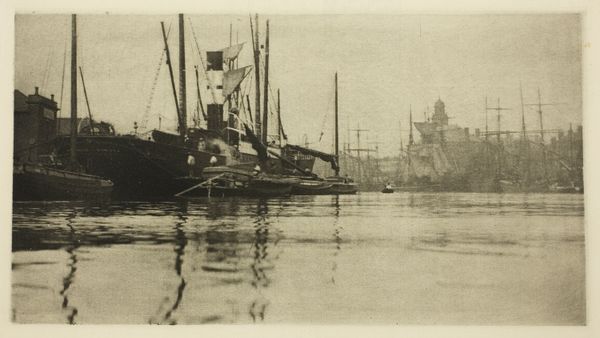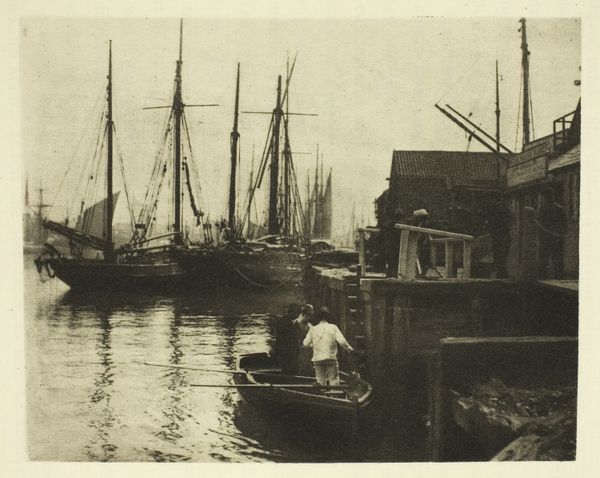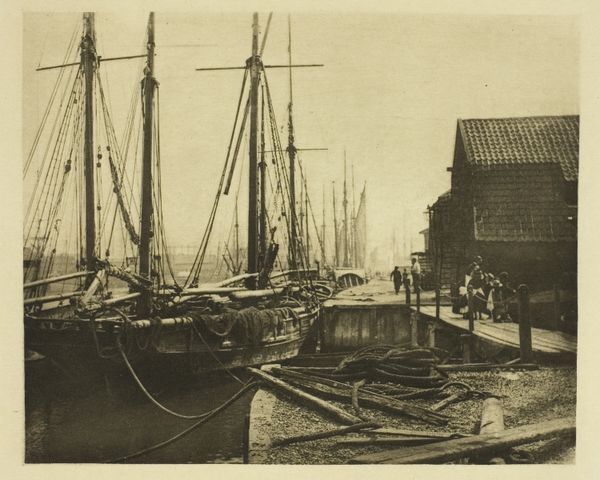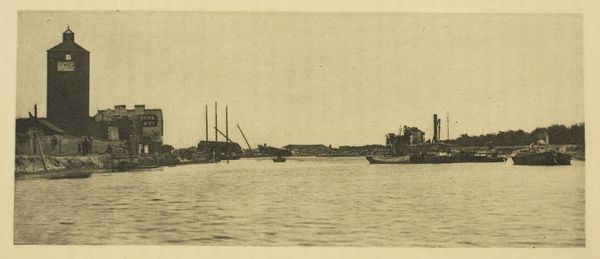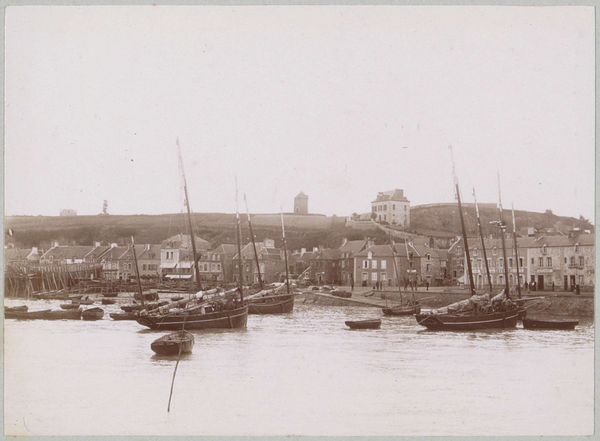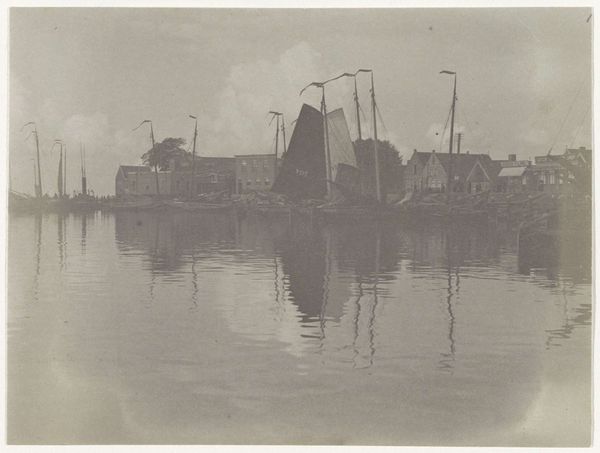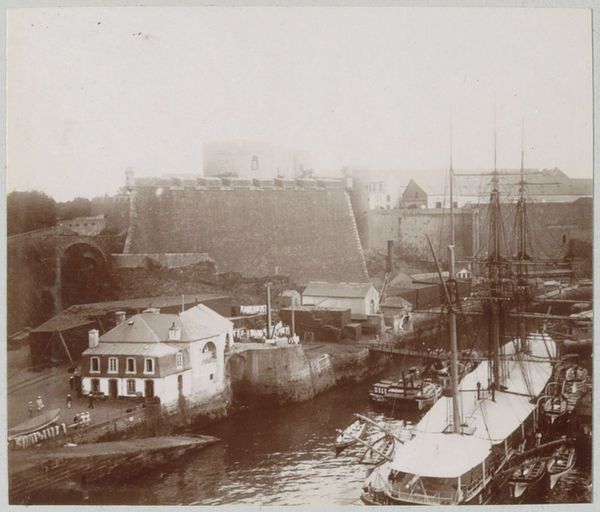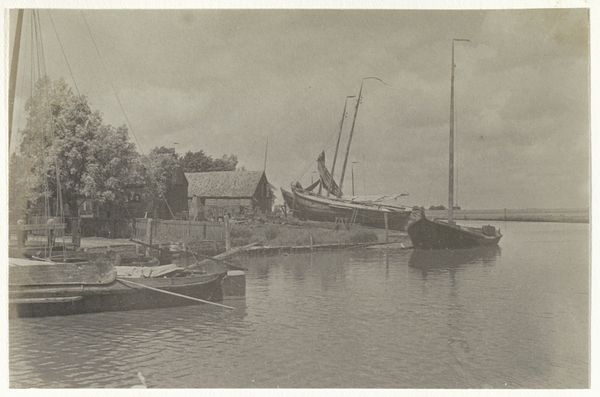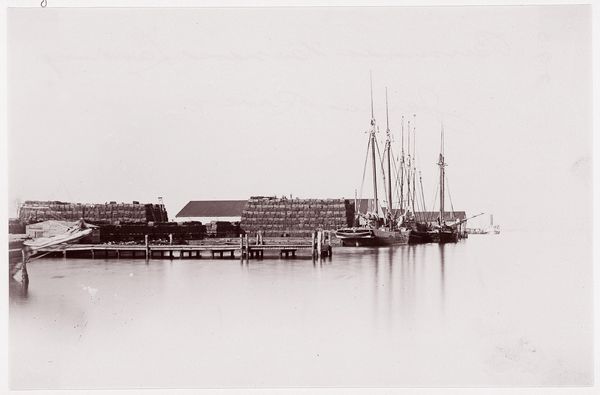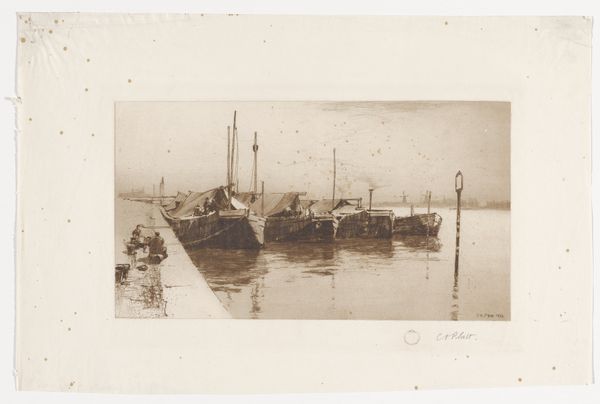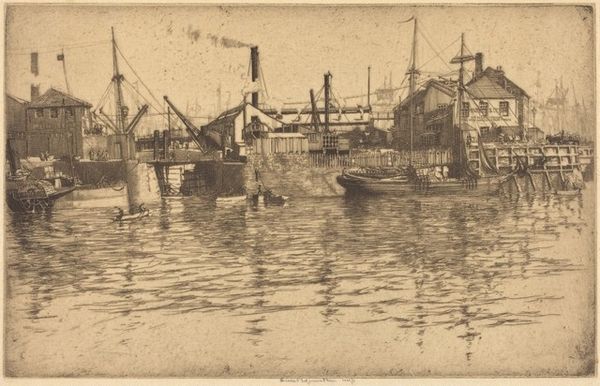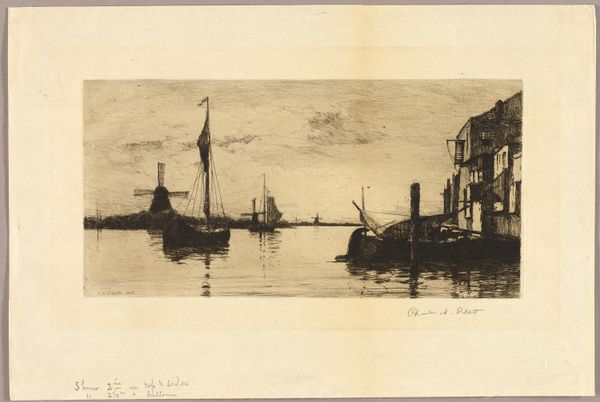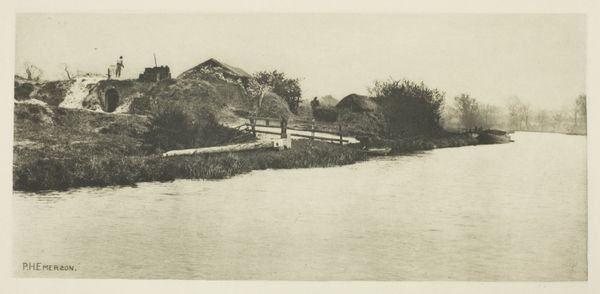
photography, gelatin-silver-print
#
16_19th-century
#
black and white photography
#
pictorialism
#
impressionism
#
landscape
#
outdoor photo
#
photography
#
historical photography
#
gelatin-silver-print
#
monochrome photography
#
cityscape
#
monochrome
Dimensions: 8.1 × 15 cm (image); 24.5 × 30 cm (paper)
Copyright: Public Domain
Curator: Peter Henry Emerson created this gelatin silver print, entitled "Bound for the North River," in 1887. Editor: It's almost dreamlike, isn’t it? A hazy, monochrome scene. I see a waterway with boats, and the outlines of buildings fading into the distance. There's something melancholic about it, a quiet stillness. Curator: That aligns with Emerson’s Pictorialist approach. He argued that photography should imitate painting, prioritizing atmospheric effects and subjective experience over precise documentation. We must consider how he manipulated the gelatin silver printing process to achieve these tonal qualities and the social context of representing labour on the river. Editor: Yes, it evokes a mood, but I'm thinking also about who’s not visible in this scene, all those nameless figures engaged in that waterside work and travel—whose lived experience shaped this landscape. Where are their stories recorded and remembered? Curator: Indeed. While stylistically evocative, one may interrogate his choices—examining the role of artistic license. Emerson captured the textures of brick and water but the composition speaks about photographic techniques rooted in the material qualities of gelatin silver print. Editor: Considering the history of art depicting labor, I’m wondering whether it inadvertently aestheticizes a very material condition of exploitation and class division during this period. The social circumstances in Britain were so complicated during that time, and it shows in the image—who has leisure, and who has the luxury of sentimental expression? Curator: I take your point. It presents a romantic view, perhaps obscuring the physical labor of navigating the river. Though Emerson was keen to reflect on artistic craftsmanship, he also captures elements reflecting the impact of production, labour and materiality through the medium. Editor: It’s that tension—the material, the historical reality—that fascinates me. By engaging with pieces like this, by Emerson, we also unpack the social and historical meaning making behind images like this, and acknowledge absences too. Curator: Indeed, his focus on technique does make one wonder about those whose lives are absent in the composition. He offers us, the viewers, an experience through his process while it's crucial that we maintain a dialogue around the historical conditions and its influence on contemporary interpretations.
Comments
No comments
Be the first to comment and join the conversation on the ultimate creative platform.
